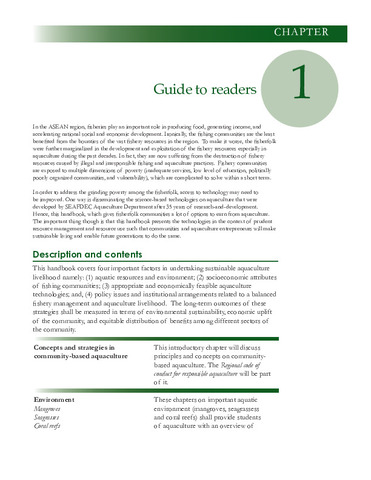Guide to readers
- Global styles
- MLA
- Vancouver
- Elsevier - Harvard
- APA
- Help

Date
2009Page views
1,993Metadata
Perlihat publikasi penuh
Share
Abstract
In the ASEAN region, fisheries play an important role in producing food, generating income, and accelerating national social and economic development. Ironically, the fishing communities are the least benefited from the bounties of the vast fishery resources in the region. To make it worse, the fisherfolk were further marginalized in the development and exploitation of the fishery resources especially in aquaculture during the past decades. In fact, they are now suffering from the destruction of fishery resources caused by illegal and irresponsible fishing and aquaculture practices. Fishery communities are exposed to multiple dimensions of poverty (inadequate services, low level of education, politically poorly organized communities, and vulnerability), which are complicated to solve within a short term.
In order to address the grinding poverty among the fisherfolk, access to technology may need to be improved. One way is disseminating the science-based technologies on aquaculture that were developed by SEAFDEC Aquaculture Department after 35 years of research-and-development. Hence, this handbook, which gives fisherfolk communities a lot of options to earn from aquaculture. The important thing though is that this handbook presents the technologies in the context of prudent resource management and resource use such that communities and aquaculture entrepreneurs will make sustainable living and enable future generations to do the same.
Suggested Citation
Southeast Asian Fisheries Development Center, Aquaculture Department. (2009). Guide to readers. In Training Handbook on Rural Aquaculture (pp. 1-3). Tigbauan, Iloilo, Philippines: Aquaculture Department, Southeast Asian Fisheries Development Center.
Type
Book chapterISBN
9789718511893Koleksi

 AQD Access
AQD Access